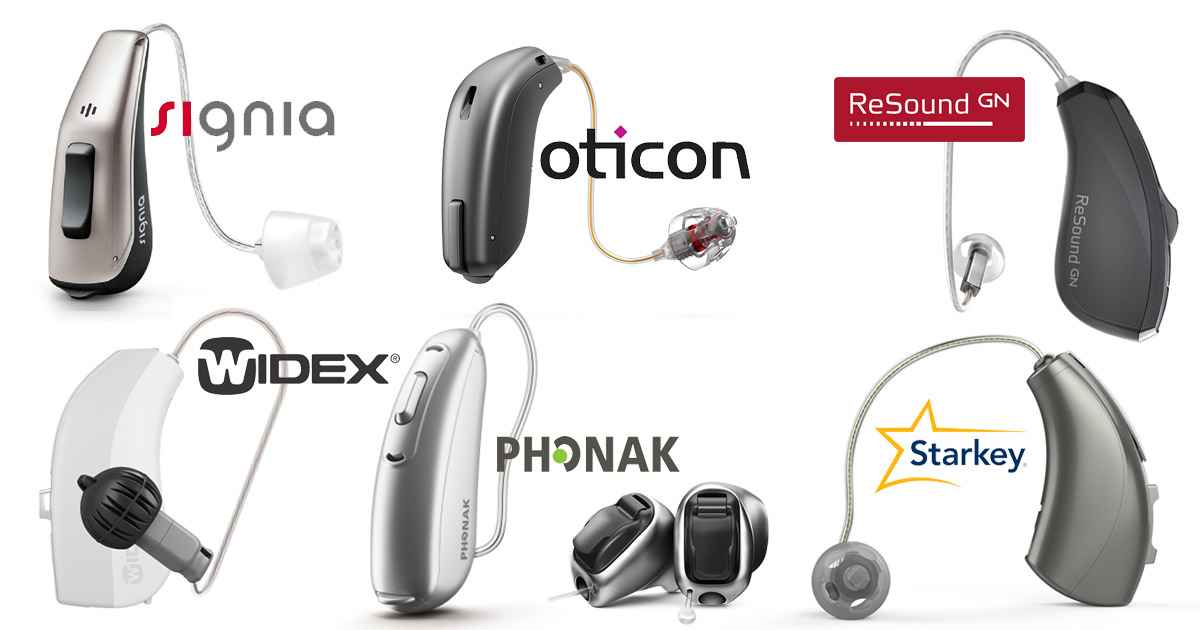Best Hearing Aids Brands In India
If you have trouble understanding conversations in restaurants or in other noisy settings, or if you need to turn up the TV louder than those around you, you're not alone. Around one out of every seven adults in the India reports some difficulty hearing.
Best Hearing Aid Brands
Popular hearing aid models from the world's top hearing aid brands.
While hearing aids are not a cure for hearing loss, they do provide enough assistance to get most people back to work, and back to communicating effectively with their loved ones. In addition to helping you hear better, modern hearing aids offer everything from wireless audio streaming to fall detection and heart rate monitoring.
If you’re not sure whether hearing aids are for you, the first step is always a hearing test and discussion with a hearing healthcare professional. If you are concerned about the cost of a hearing test, please check our listings for a clinics that offer free hearing screenings.
- Table of contents
- What are hearing aids?
- How do hearing aids work?
- Hearing aid prices
- Hearing aid brands
- Hearing aid types
- Hearing aid features
- Wireless connectivity
- Comparing models
- Consumer preferences
- Hearing aid reviews
- Popular models
- Hearing aids near me
What are hearing aids?
Hearing aids are small electronic devices that are worn on the ear, or in the ear, to help make sounds audible for those affected by hearing loss. While some people wear hearing aids to hear environmental sounds better, the primary goal of most hearing aid fittings is to improve communication with friends, family, and coworkers.
Modern digital hearing aids not only amplify sound, but also dampen unwanted noise. Through the magic of sound processing, they can make it easier to hear people's voices while reducing sound in noisy environments that often make it difficult to understand what others are saying.
How do hearing aids work?
Hearing aids collect sound using a microphone, amplify and process the collected sound using advanced digital signal processing technologies, and then provide amplified / processed sound to the hearing aid wearer through a tiny speaker. At the most basic level, hearing aids are made up of four primary parts:
The microphone - The microphone picks up acoustic sounds from the environment and converts those sounds into an electronic signal. The electronic signal from the microphone is sent to the hearing aid sound processor.
The sound processor - The sound processor takes the electronic signal from the microphone and converts it to a digital format. Digitally-represented sound is enhanced and amplified by the hearing aid processor, and converted back to an electronic signal before being sent to the speaker.
The speaker - Sometimes referred to as the “receiver,” the speaker is the part that creates the sound waves that enter your ear and vibrate your eardrum.
The battery - A power source of some kind is required to enable the functionality of the microphone, sound processor, and speaker.
These four parts represent the absolute bare minimum in terms of the parts needed to constitute a functional digital hearing aid. Hearing aids typically have many additional hardware features, such as telecoils, wireless radios, and manual controls. Skip ahead to our hearing aid features section to learn more.
Note: Analog hearing aids are no longer manufactured by any major manufacturer. The description above, and all information that follows specifically addresses digital hearing aids.
Hearing aid prices
One of the biggest complaints consumers have about hearing aids is the high cost. And it's true that a pair of premium hearing aids can set you back anywhere from $4,000 to 6,000. But over the past few years, more and more high-performance hearing aid models have become available at much lower price points.
A recent Hearing Tracker survey of over 2,000 consumers found that the average price of a single hearing aid is1L. Most of the consumers surveyed bought high-end hearing aid technology from popular brands like Phonak, Widex, Signia, Oticon, ReSound, and Starkey. To save money, some consumers shopped for hearing aids at Costco, purchased lower-end models, or turned to direct-to-consumer online channels channels.
Don’t want to sacrifice on service quality or technology level? Check our Hearing Tracker’s Local Hearing Aid Discounts platform to find great deals from local hearing aid practices, many of which offer gold-standard services like Real Ear Measurements (REMs).
Hearing aid brands
Five companies currently command more than 80% of the global market for hearing aids. So who are the so-called “Big Five” hearing aid companies, what makes them so special, and what products do they produce?









Post a Comment
Hello